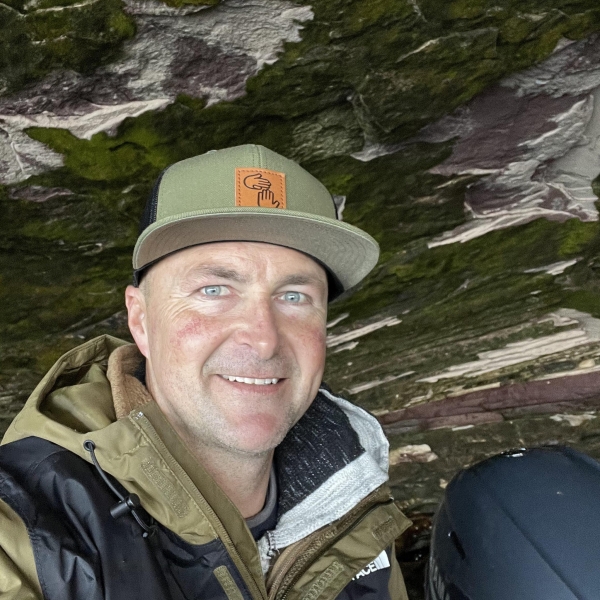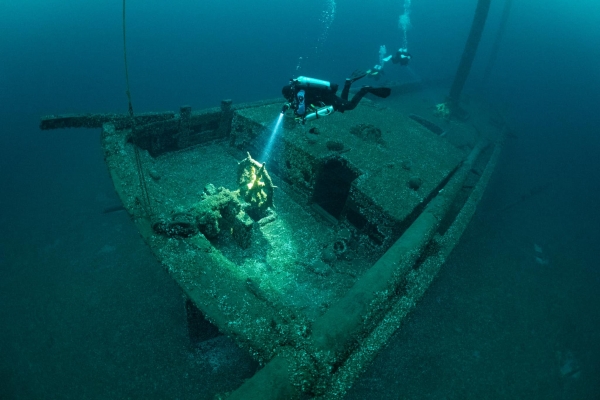Interview with Shipwreck Diver Chris Roxburgh
The Leelanau Ticker has a great feature on local shipwreck diver & frequent Leelanau.com contributor Chris Roxburgh that begins:
“I grew up in Leelanau County, so I’ve been swimming in Lake Michigan since I was five years old,” Roxburgh says. “But it wasn’t until five or six years ago that I really learned about how many shipwrecks we have around here. And then I knew I wanted to start diving.”
The spark of inspiration came one winter day when Roxburgh was out paddleboarding off the shores of Northport with a friend. Suddenly, without even trying to, the two found themselves gliding over a shipwreck. The shallow-water wreck, later identified as the George Rogers, had sunk in 1914, but had for years eluded local shipwreck enthusiasts because it was closer to shore than anyone anticipated.
A week later, Roxburgh went back to the site with a wetsuit and a GoPro. He wasn’t certified at the time as a scuba diver, but he still spent enough time in the 34-degree water to capture the first photographs and video ever taken of the long-forgotten tugboat. When he posted those assets on Facebook, they got a huge response from the local community. Between the thrill of finding the wreck and the dopamine rush of the social media engagement—not to mention the beguiling excitement of the dive itself—Roxburgh knew he’d just found a new passion.
“That first wreck inspired me to get certified for scuba diving and started the path to where I am today,” Roxburgh says. “And I found I was a natural at it. I was diving 200-foot-deep wrecks within two years, which is not very common for people to do. Most new divers take years to get deeper.”
Since that first dive, Roxburgh has become a bona-fide underwater expert, with dozens of dives under his belt and a whole lot of photographic and video evidence to tell the tale. In fact, it’s Roxburgh’s knack for capturing the look and feel of underwater wonders that has proven to be his biggest superpower – perhaps more so even than his natural talent for diving.
…Roxburgh’s third dive was a freediving session out near Power Island, where he “came across the Great Lakes Stone Circle.” That landmark is essentially an underwater Stonehenge—a series of stones organized in a circle some 40 feet beneath the surface and thought to be at least 10 millennia old. The site was first discovered in 2007 by Mark Holley, a professor at Northwestern Michigan College (NMC), but Holley didn’t disclose the location. Roxburgh “re-found” the landmark and got another feature in the Detroit Free Press for his trouble, plus a chance to be involved in a History Channel program.
Read lots more in the Ticker and follow Chris on Facebook, YouTube, or through his website.




